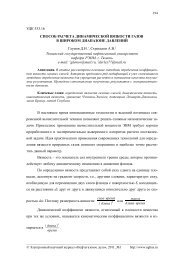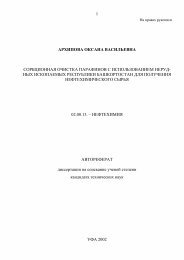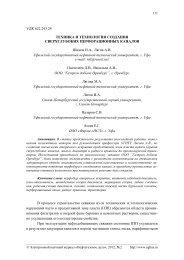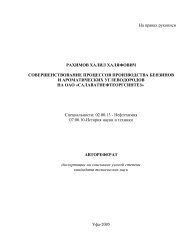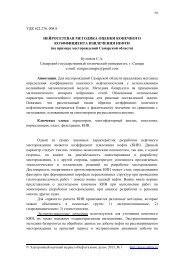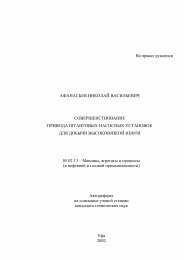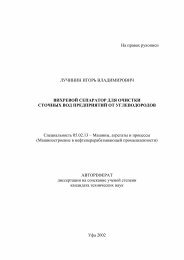FCC PROCESS OF HEAVY FEED STOCK WITH IMPROVED YIELD ...
FCC PROCESS OF HEAVY FEED STOCK WITH IMPROVED YIELD ...
FCC PROCESS OF HEAVY FEED STOCK WITH IMPROVED YIELD ...
Create successful ePaper yourself
Turn your PDF publications into a flip-book with our unique Google optimized e-Paper software.
Reduction riser contact time effects in the presence of a catalyst composition<br />
containing a large quantity of a small to medium pore zeolite component, and in a pro-<br />
cess system where the temperature of the catalyst contacting the feed is representative<br />
of a recycled catalyst system. The study was conducted in a <strong>FCC</strong> riser operating under<br />
conditions favorable to obtain greater yields of light olefins. Tests were performed using<br />
three riser residence times: 2.5 seconds, 1.5 seconds, and 0.7 seconds. A riser in the<br />
<strong>FCC</strong> process was run at 0,141 MPa, a regenerator temperature of around 654 °C an<br />
outlet temperature of 566 °C, a feed temperature of about 121 °C, a riser hydrocarbon<br />
partial pressure of about 0,076 MPa, and a catalyst-to-feed ratio of about 28. The results<br />
for each of the residence times in the riser are presented in Table 1.<br />
Yield of light products against residence time<br />
Riser Time (sec.) 0,7 1,5 2,5<br />
Dry Gas (wt-%) 2,29 2,78 4,11<br />
Ethylene (wt-%) 5,96 6,88 6,02<br />
Propylene (wt-%) 21,64 22,30 19,36<br />
Butylene (wt-%) 14,12 13,41 12,56<br />
Table 1<br />
Decreasing the residence time in the riser from 2,5 seconds to 0,7 seconds<br />
increased the relative propylene yield by 12 % with a corresponding decrease in dry gas<br />
of 44 %. This corresponds to an absolute yield increase of 2,3 % wt. propyl ene and<br />
1,8 % wt. decrease in dry gas. Decreasing the residence time in the riser from 2,5<br />
seconds to 1,5 seconds increased the relative propylene yield by 15 % with the<br />
corresponding decrease in dry gas of 32 %. Ethylene production increased in 1,5 second<br />
riser residence time and nominally decreased at 0,7 second riser residence time.<br />
Additionally, butylene production increased with reductions in riser residence time.<br />
Surprisingly, the 2,5 second residence time actually experienced lower conversion than<br />
the shorter times of 1,5 or 0,7 seconds. It attributed this drop in conversion due to a<br />
reduction of secondary reactions such as olefin oligomerization, which produce higher<br />
molecular weight components.<br />
One of the benefits of the present method is that recycling of coked catalyst and<br />
mixing it with regenerated catalyst can reduce the catalyst temperature entering the riser<br />
by 28 °C to 83 °C, depending on the regenerator temperature and the coked catalyst<br />
_____________________________________________________________________________<br />
© Oil and Gas Business, 2009 http://www.ogbus.ru/eng/<br />
7



